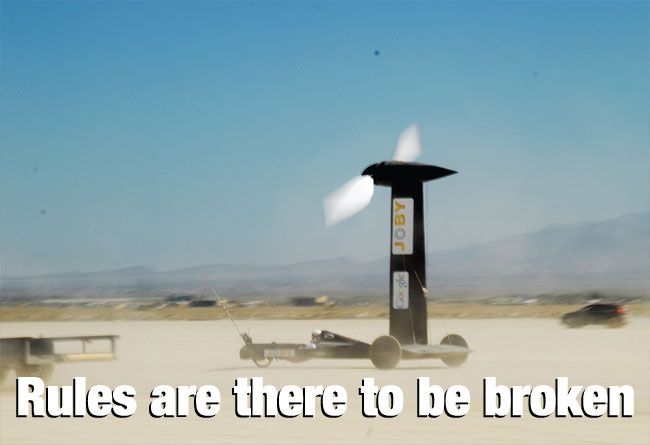
A couple of years back we saw how Rick Cavallaro was sailing directly downwind significantly faster than windspeed. Now he has achieved it again... but the other way
It all started out so innocently. I was asked by a friend whether a sailboat could tack downwind fast enough to beat a free-floating balloon to a point directly downwind. We both knew a sailboat could sail faster than the wind, but this was a new one on me. I drew up a quick vector analysis (page 41) and concluded that it should be theoretically possible. This struck me as surprising, and potentially the basis of a good brain-teaser.
As it happens, I should have known that ice-boats and land yachts have been routinely managing downwind VMG (velocity made good) much faster than windspeed for some time as, more recently, have an increasing number of high-performance sailboats.
Nevertheless, I got to thinking how I could fashion this as a good brain-teaser. If I could think of a way to make this principle work on a vehicle that goes directly downwind that should prove sufficiently brain bending.
First I imagined a high-performance sailboat on a broad reach with downwind VMG faster than the wind. But instead of gybing back and forth, I imagined it on a cylindrical planet following a continuous helical path along the axis of that imaginary planet. Then I imagined an identical boat directly opposed to the first one (page 40); the sails now form the blades of a propeller that is going directly downwind faster than the wind. The trick, of course, is that neither propeller blade is going directly downwind, but tie them together and they form a propeller whose centre of mass is going directly downwind.
Good enough in concept, but hardly a practical answer – and frankly a little too easy to believe. I had to think of a way to reduce this to a vehicle that someone could imagine building. It’s easy enough to imagine placing a propeller on a coarsely threaded rod to follow that same path; given the right propeller pitch, thread pitch and sufficiently high efficiency, this would go directly downwind faster than the wind (with the wind blowing along the threaded rod). But still not quite the answer to the puzzle I was trying to pose.
We invite you to read on and find out for yourself why Seahorse is the most highly-rated source in the world for anyone who is serious about their racing.
To read on simply SIGN up NOW
Take advantage of our very best subscription offer or order a single copy of this issue of Seahorse.
Online at:
www.seahorse.co.uk/shop and use the code TECH20
Or for iPad simply download the Seahorse App at the iTunes store


